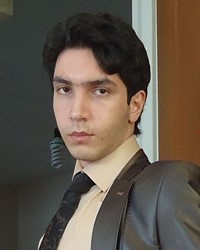Semnani in Iran

Photo Source:
Studiozanla - Wikimedia
Creative Commons
|
Send Joshua Project a map of this people group.
|
| People Name: | Semnani |
| Country: | Iran |
| 10/40 Window: | Yes |
| Population: | 73,000 |
| World Population: | 73,000 |
| Primary Language: | Semnani |
| Primary Religion: | Islam |
| Christian Adherents: | 0.00 % |
| Evangelicals: | 0.00 % |
| Scripture: | Translation Started |
| Ministry Resources: | No |
| Jesus Film: | No |
| Audio Recordings: | Yes |
| People Cluster: | Persian |
| Affinity Bloc: | Persian-Median |
| Progress Level: |
|
Introduction / History
We don't know about the origins of the Semnani people, but their language might offer a clue. It is related to the language of the ancient Medes who were associated with the Persians of old. They are a small people group in northern Iran near the Caspian Sea.
What Are Their Lives Like?
Little is known about their specific lifestyle, but we might assume they are primarily herdsmen. More than half of Iran is either rugged terrain or wasteland, most of which is uninhabitable salt deserts. The Semnani people have a small population, so most likely the land does not sustain many people. They probably suffer from a lack of adequate health care facilities. Many small towns and rural areas suffer from unsanitary conditions and a shortage of medical personnel and facilities. Contagious diseases such as scarlet fever, whooping cough, pulmonary tuberculosis, and typhoid fever are a danger to the Semnani people. The infant mortality rate is a serious problem; it is very high by both international and Middle Eastern standards. Life expectancy is about 65 years for both sexes. Although five years of primary education is compulsory in Iran, many rural children from the Semnani people never attend school because of either parental objection or a lack of facilities. The secondary school system is relatively undeveloped, and it serves mainly to prepare a small number of students for university-level education.
What Are Their Beliefs?
The Semnani are virtually all Muslim. They believe that the one, supreme god, Allah, spoke through his prophet, Mohammed, and taught mankind how to live a righteous life through the Koran and the Hadith. To live a righteous life, you must utter the Shahada (a statement of faith), pray five times a day facing Mecca, fast from sunup to sundown during the month of Ramadan, give alms to the poor, and make a pilgrimage to Mecca if you have the means. Muslims are prohibited from drinking alcohol, eating pork, gambling, stealing, slandering, and making idols. They gather for corporate prayer on Friday afternoons at a mosque, their place of worship. Like most Muslims, the Semnani people depend on the spirit world for their daily needs since they regard Allah as too distant. Allah may determine their eternal salvation, but the spirits determine how well we live in our daily lives. For that reason, they must appease the spirits. They often use charms and amulets to help them deal with spiritual forces.
What Are Their Needs?
The Semnani people need adequate schools and medical clinics. Iran remains closed to traditional missionary work, but there is a strong and growing Church. Semnani people need Iranian believers to take Christ to their communities.
Prayer Points
Pray for loving Christ followers in Iran to reach the Semnani people, resulting in a movement to Christ. Pray for the Semnani people to have a hunger and thirst for righteousness that will soon be satisfied by a relationship with Jesus Christ. Pray for the Lord to pave the way for the Semnani people to find their way to the cross and the empty grave. Pray for the Lord to raise up a faith-filled Church among the Semnani people this decade.